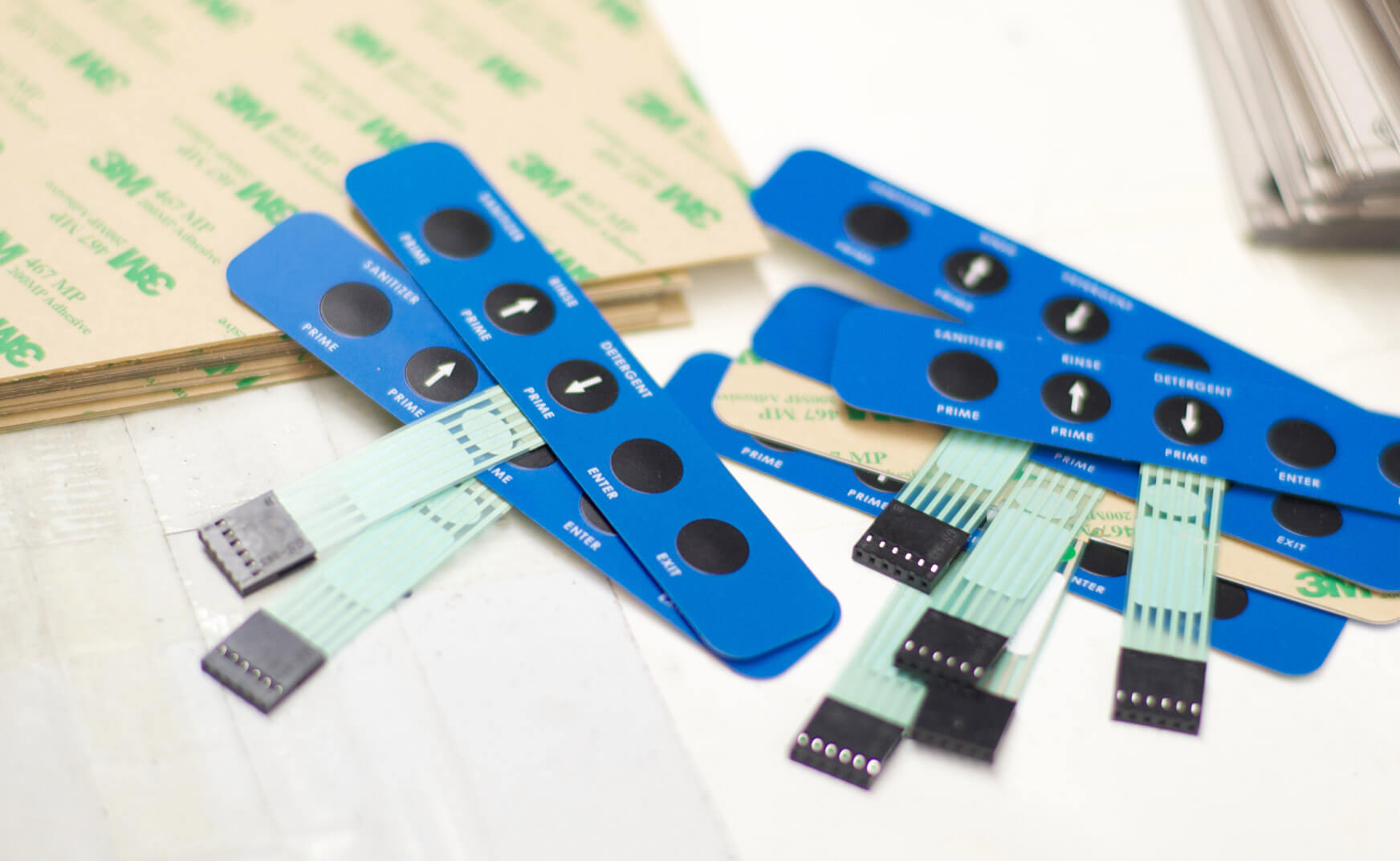Understanding the Significance of Membrane Switches in Customer Interfaces
Membrane switches are indispensable components in the design of efficient customer interfaces, facilitating not only performance yet also improving visual appeal and user interaction. As we check out the future patterns and different benefits connected with Membrane modern technology, it comes to be clear that these switches are more than just elements; they represent a convergence of advancement and practicality.
What Are Membrane Switches?

The spacer layer, which includes adhesive homes, enables for the separation of the circuit layer from the overlay, ensuring that the button continues to be in a non-activated state up until pressed. When pressure is used to the overlay, it presses the spacer layer, linking the void and completing the circuit in the underlying layer. This design not only lowers the physical area required for traditional mechanical buttons however additionally improves the sturdiness of the device, as Membrane switches are generally immune to dust, moisture, and various other environmental factors.
Typically found in applications varying from consumer electronic devices to clinical devices, Membrane switches are indispensable to contemporary technology, giving a easy to use and reliable interface that lines up with modern style requirements.
Benefits of Membrane Buttons
While various button innovations exist, Membrane Switches deal distinct benefits that make them particularly desirable in various applications. Among the key benefits of Membrane buttons is their compact layout, which permits space-saving applications in devices where property is restricted. Their thin account not just enhances visual allure however additionally facilitates light-weight building and construction.
One more significant benefit is their resistance to ecological factors. Membrane switches are commonly secured against dampness, dirt, and pollutants, making them ideal for use sought after settings, such as medical devices and industrial devices. This durability prolongs the life expectancy of the button, lowering maintenance expenses and boosting reliability.
Furthermore, Membrane buttons can be tailored to fulfill specific layout requirements, incorporating distinct graphics and colors that improve individual communication. Their responsive responses options can likewise be tailored to supply an enjoyable user experience. Furthermore, Membrane buttons are cost-effective, particularly in high-volume applications, as they can be produced efficiently.
Applications in Numerous Industries

In the customer electronics field, Membrane buttons are widespread in gadgets such as microwaves, washing equipments, and push-button controls. Their tactile responses and aesthetic options enhance user experience while offering a sleek, modern-day appearance. Furthermore, automobile manufacturers make use of Membrane buttons in dashboard controls and infomercial systems, where space is restricted, and individual engagement is essential.
Additionally, the industrial market leverages Membrane switches in control panels for equipment and devices, permitting user-friendly procedure in commonly extreme atmospheres. Their resistance to chemicals and moisture makes sure longevity and dependability in these applications. On the whole, the index versatility of Membrane Switches contributes dramatically to their widespread usage, making them indispensable in different technical domains.
Style Factors To Consider for Membrane Switches

When developing Membrane buttons, numerous key factors to consider must be taken into consideration to make sure optimum functionality and user experience. The selection of products is critical; selecting durable, top quality substrates can improve the button's long life and resistance to ecological aspects such as wetness and temperature level changes.
Secondly, the style of the graphic overlay should prioritize quality and convenience of usage. Icons and text should be clear, and the layout should facilitate intuitive communication (membrane switches). In addition, responsive feedback is important; incorporating a responsive dome or various other mechanisms can enhance the customer experience by supplying physical confirmation of activation
Another important variable is the button's electrical efficiency. Developers should ensure that the conductive traces are properly developed to minimize resistance and stay clear of signal disturbance. This entails analyzing the needed actuation force and making certain compatibility with the electronic components they will certainly interface with.

Future Trends in Membrane Innovation
As modern technology remains to advance, Membrane buttons are poised to advance considerably, driven by technologies in materials and making techniques. One arising trend is the consolidation of innovative materials, such as conductive inks and versatile substratums, which enhance toughness and reduce the general weight of Membrane buttons. These materials not just boost the tactile action yet also enable the layout of switches that can stand up to harsher ecological conditions.
Moreover, the integration of touch-sensitive innovations is changing standard Membrane Switches right into more interactive interface. Capacitive touch sensing units embedded within Membrane switch panels can supply an extra receptive and intuitive individual experience, straightening with the expanding demand for streamlined, modern-day layouts in consumer electronics.
Additionally, improvements in printing methods, such as electronic and 3D printing, make it possible for quick prototyping and customization of Membrane switches. This flexibility allows producers to react faster to market needs and customer choices.
Last but not least, sustainability is coming to be a substantial emphasis, with suppliers discovering eco-friendly materials and procedures. As these fads unravel, the future of Membrane innovation promises boosted capability, visual charm, and environmental responsibility, strengthening their function in sophisticated interface across numerous sectors.
Final Thought
In final thought, Membrane Switches stand for a vital part in the design of customer interfaces, combining capability with aesthetic versatility. As advancements in innovation continue, the development of Membrane switches is anticipated go to my site to more fine-tune customer interfaces, driving development and boosting usability in a progressively intricate technical landscape.
Membrane buttons are integral elements in the layout of effective individual interfaces, promoting not only performance yet also improving visual allure and official statement user interaction.Membrane Switches offer as a vital element in different customer interfaces, facilitating a seamless communication in between customers and electronic devices.While many button modern technologies exist, Membrane Switches offer distinctive advantages that make them especially desirable in different applications.In addition, Membrane buttons can be customized to meet particular style demands, including one-of-a-kind graphics and shades that enhance user interaction.In verdict, Membrane Switches stand for a crucial part in the layout of customer interfaces, incorporating capability with visual adaptability.